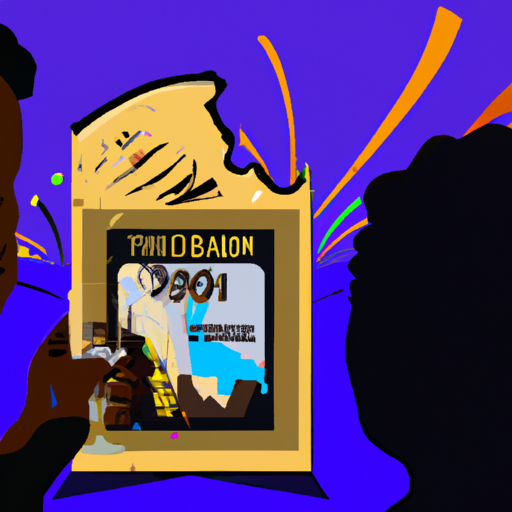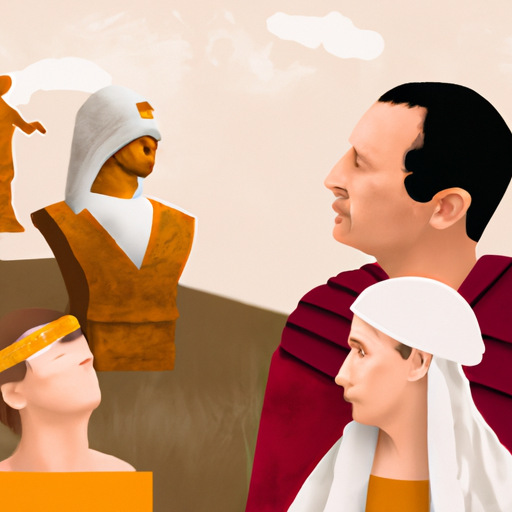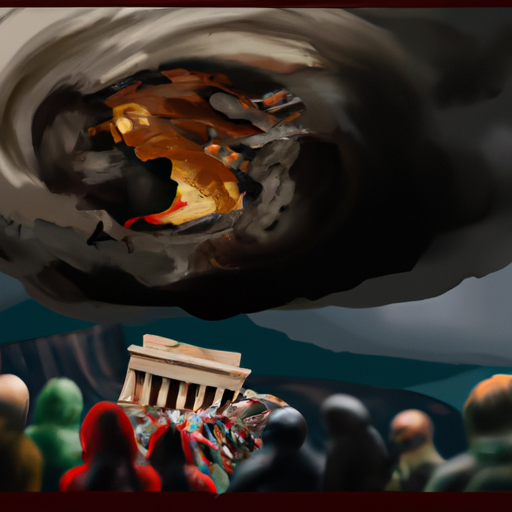A Historical Look at Viking Violence
Unearth the tumultuous past of the Vikings and delve into their heritage! Uncover the ferocity that was once part of their culture and investigate the impact they had on our world. Unveil the secrets of this legendary civilization and uncover what lies beneath. Delve deep into their history, from their raids to their conquests, and discover how they shaped our present day. Examine the legacy they left behind and explore its influence on modern life. Uncover the truth about these fierce warriors and discover why they are still remembered today.

A culture of fierceness and strength, the Vikings were a people whose legacy has left an everlasting imprint on our history. Their raids, conquests, and settlements have shaped the modern world in innumerable ways. From their exploration and warfare to their artistry, literature, and language, the Vikings have had a lasting effect on our lives today.
Exploring the Vikings’ customs and beliefs is essential to understanding them and their place in history. They were renowned for their extraordinary maritime capabilities and bold raids across Europe as well as beyond its borders. Their ships were swift with iron-tipped spears, swords, axes, bows, arrows, shields, helmets; they also boasted intricate navigation techniques as well as sophisticated methods for constructing boats.
The Viking Age (800-1050 AD) was a time of tremendous growth for the Norse people; during this period they set up settlements in many parts of Europe such as England, Ireland, Scotland, Iceland, Greenland, France and Russia. Furthermore they ventured further afield to North America where they founded what is now Newfoundland in Canada. The Vikings were celebrated traders who exchanged items like furs and walrus ivory for slaves or silver coins from other lands.
The legacy of the Vikings continues to be experienced today in various fields including literature, language artsmanship and architecture. Their impact can be seen everywhere from English words that are derived from Old Norse to modern Scandinavian design elements such as wooden furniture with delicate carvings or brightly coloured textiles featuring geometric patterns.
Scholars around the world are still discovering new evidence concerning this legendary civilization every day; while doing so we gain insight into how they lived centuries ago which can help us comprehend our own present day societies better.
.
Introduction

A people shrouded in mystery and enigma, the Vikings had a tumultuous past of brutality. From the onset of the 8th century to the end of the 11th, they made their mark across Northern Europe through raids and conquests. Their reputation for ferocity was well-known; both on land and sea, they were feared for their incursions into monasteries and settlements alike. While trading was a part of Viking life, it often came with a hefty price tag – pillaging and looting were common practices. The foundations of Viking society were built upon a warrior culture that venerated combat skills and warfare; making it clear that violence was at the core of this ancient people’s being.
– Exploring the Historical Evidence of Viking Violence
The Vikings have been a source of perplexity for ages, with their violent tendencies being difficult to ascertain. To better comprehend this, it is essential to look into the available historical evidence. Archaeological findings can provide weapons and artifacts associated with warfare, as well as jewelry and coins that may indicate battles or raids. Written accounts from other cultures who encountered the Vikings can give an insight into how they were perceived by outsiders. Sources within Viking culture itself such as sagas and stories passed down through generations may also include details about battles or raids. Additionally, some archaeological sites have revealed human sacrifice practiced by certain tribes. All of these sources offer a glimpse into the level of violence employed by the Vikings in different periods throughout their history.
– Examining the Role of Religion in Viking Warfare
Mystical powers, believed to be imbued in runes, were used by the Vikings during warfare. Runes were symbols that could be used to invoke gods and ward off evil forces, giving warriors an edge in battle. It was also customary for fallen warriors to be buried on a boat or pyre and sent out into the sea or set alight, so their souls would ascend into Valhalla and join Odin’s army at Ragnarok. War was seen as a sacred duty that must be fulfilled for honor and glory in service to the gods, inspiring many Vikings to take part in raids without fear of death. Religion thus had a profound influence on how Vikings conducted themselves in battle; from runes to funeral rites, it is clear that religious beliefs shaped Viking warfare throughout its history.
– Analyzing Viking Raids and Their Impact on Medieval Europe
For centuries, the devastating and tumultuous effects of Viking raids have been an integral part of European history. Unbeknownst to many coastal towns, these fierce warriors used their quick-journeying ships to launch surprise assaults from Scandinavia during the 8th to 11th centuries. During these raids, they would take whatever they could get their hands on – food, animals, weapons, jewelry, and other valuable items – as well as kidnap people for ransom or slavery. The consequences of these attacks were far-reaching and long-lasting; trade routes were disrupted due to fear of future invasions, towns had to be rebuilt after being destroyed by Vikings’ ruthless actions, and kings imposed higher taxes on their subjects in order to pay for defense against further invasions. The impact of this turbulent episode in Europe’s past is still visible today through its influence on politics and economics within the region.
– Assessing the Legacy of Viking Warriors in History
The saga of the Viking warriors lives on in history, a lasting reminder of their presence and power. Across the 8th to 11th centuries, these marauders left an imprint on Europe and beyond that has yet to be matched. Despite the oft-perceived image of ruthless fighters, there is evidence pointing to a much more intricate society than initially thought. By analyzing historical documents, archaeological findings, and other sources, we can gain insight into these legendary figures and the impact they had on our past.
Artifacts such as tools, weapons, jewelry, ceramics, and coins unearthed from Viking settlements offer us a peek at their daily lives. Additionally, accounts from contemporaries like Arab traders or Christian missionaries provide us with a glimpse into how they interacted with other cultures. Through this evidence we can see how the Vikings lived and what influence they had on different societies.
The military might of the Vikings is also evident in their successful raids across Europe due to their advanced navigation techniques and tactics. Their ability to traverse large bodies of water allowed them to quickly surprise victims with unexpected attacks. This strategy was effective for many years until better defenses were developed against them by European powers.
Lastly, it is important to consider the long-term effect that the Vikings had on European culture and society. They brought new technologies such as ironworking which revolutionized agriculture and warfare in Europe at that time. Furthermore, they spread novel ideas about religion which eventually led to Christianity’s growth throughout Scandinavia during the Middle Ages; without Viking influence European civilization may have taken a different path than it did historically speaking.
In conclusion, examining the legacy of Viking warriors in history unveils an intricate picture of these legendary figures whose mark remains embedded in European culture centuries after their passing. By studying archaeological artifacts, historical records, and other evidence we can gain insight into how these ferocious warriors lived and how they impacted our world forevermore.
– Investigating the Causes of Increased Viking Aggression Throughout History
Exploring the complexities behind the rise of Viking aggression in history is a complex and multifaceted endeavor. During the 8th through 11th centuries, Scandinavian seafarers established their presence in Europe, particularly Britain, with raids that have been well-documented. To gain insight into why the Vikings became more hostile over time, it is essential to consider economic pressures, political instability, religious convictions, and other social conditions that could have shaped their behavior.
The population growth in Scandinavia during this period may have caused competition for resources and land which could have led to increased raiding activity by the Vikings. Political turmoil in Europe at this time may also have been a factor as rulers sought to expand their power and influence by attacking weaker states or regions. Furthermore, some Viking groups may have seen raiding as part of their sacred duty or as a way to gain glory in Valhalla. Finally, famine or disease could have further exacerbated tensions between different groups leading to greater violence.
In conclusion, there was likely no single cause behind increased Viking aggression throughout history but rather a combination of several influences including economic pressures, political instability, religious beliefs and other social conditions. By understanding these various factors it is possible to gain an understanding of why the Vikings became increasingly aggressive over time.
conclusion

A perplexing history of the Vikings is rife with tales of aggression and combat, yet there is also a wealth of evidence that suggests they were more than warriors. With no mention of it, their culture has been seen to extend far beyond the realm of violence, encompassing trading and settlement as well. An enigmatic past for these people paints a picture that is both turbulent and multifaceted.
.
Some questions with answers
Q1: How violent were Vikings?
A1: Vikings were known for their violent and aggressive behavior, particularly in battle.
Q2: What type of warfare did the Vikings use?
A2: The Vikings used a variety of tactics in warfare, including surprise attacks, raids, and sieges.
Q3: Did the Vikings fight with other cultures?
A3: Yes, the Vikings often fought with other cultures such as the Anglo-Saxons and the Franks.
Q4: What weapons did the Vikings use?
A4: The Vikings used a variety of weapons including swords, axes, spears, shields, bows and arrows.
Q5: How has history viewed Viking violence?
A5: While some historians have portrayed Viking violence as excessive or even barbaric, others have argued that it was an important part of their culture and necessary for survival.





